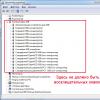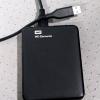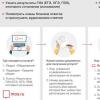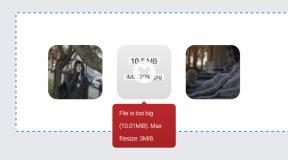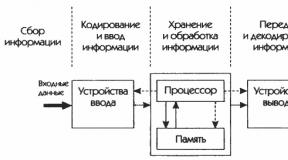Error 57 update win 8. How to fix errors when installing Windows updates using built-in component recovery. Troubleshooting Windows Update
Good afternoon, dear readers, last time we looked at how you can, today we will take a break from useful services and focus on solving errors, namely: error 8024a000 when updating Windows 8.1. It prevents the installation of fresh security patches, which even the laziest people have started doing recently, all because of the threat of viruses.
Main causes of error 8024a000
Before treating symptoms, you need to understand their causes, I can highlight the following list:
- Updates in the C:\Windows\SoftwareDistribution folder are damaged, this happens when the Internet connection is unstable or the antivirus is very harsh
- Windows Update Service Problem
- Problem with Windows libraries
- A crooked update is coming your way
This is what the update problem with code 8024a000 looks like in Windows 8.1.

Methods for fixing error 8024a000
- The first thing I advise you to do is run the diagnostic utility, it itself can understand what the problem is and fix it, there is a button for it right below, but if for some reason you don’t have it, you can either find it in the panel management, in the "Troubleshooting" section

Find the "System and Security" item and run troubleshooting using Windows Update. 
In 50 percent of cases it helps solve the problem. If it doesn’t help, then move on to the next point.
- Deleting the contents of the C:\Windows\SoftwareDistribution and C:\Windows\System32\Catroot2 folders. Downloaded updates are stored in the first folder, logs in the second. There are situations when the update was downloaded incorrectly and it became damaged, leaving behind garbage in the SoftwareDistribution folder, so you need to delete it.
You and I have already done this in a post about the endless search for updates. Open the command line as administrator, the first thing you need to do is stop three services
- net stop wuauserv
- net stop bits
- net stop cryptsvc

ren %systemroot%\System32\Catroot2 Catroot2.old
ren %systemroot%\SoftwareDistribution SoftwareDistribution.old
They rename the SoftwareDistribution and Catroot2 folders to the same ones, but with the additional word .old, and in their place original and empty folders are created.

Then you need to run the cmd file as an administrator, the tasks of which include registering the necessary libraries
regsvr32 c:\windows\system32\vbscript.dll /s
regsvr32 c:\windows\system32\mshtml.dll /s
regsvr32 c:\windows\system32\msjava.dll /s
regsvr32 c:\windows\system32\jscript.dll /s
regsvr32 c:\windows\system32\msxml.dll /s
regsvr32 c:\windows\system32\actxprxy.dll /s
regsvr32 c:\windows\system32\shdocvw.dll /s
regsvr32 wuapi.dll /s
regsvr32 wuaueng1.dll /s
regsvr32 wuaueng.dll /s
regsvr32 wucltui.dll /s
regsvr32 wups2.dll /s
regsvr32 wups.dll /s
regsvr32 wuweb.dll /s
regsvr32 Softpub.dll /s
regsvr32 Mssip32.dll /s
regsvr32 Initpki.dll /s
regsvr32 softpub.dll /s
regsvr32 wintrust.dll /s
regsvr32 initpki.dll /s
regsvr32 dssenh.dll /s
regsvr32 rsaenh.dll /s
regsvr32 gpkcsp.dll /s
regsvr32 sccbase.dll /s
regsvr32 slbcsp.dll /s
regsvr32 cryptdlg.dll /s
regsvr32 Urlmon.dll /s
regsvr32 Shdocvw.dll /s
regsvr32 Msjava.dll /s
regsvr32 Actxprxy.dll /s
regsvr32 Oleaut32.dll /s
regsvr32 Mshtml.dll /s
regsvr32 msxml.dll /s
regsvr32 msxml2.dll /s
regsvr32 msxml3.dll /s
regsvr32 Browseui.dll /s
regsvr32 shell32.dll /s
regsvr32 wuapi.dll /s
regsvr32 wuaueng.dll /s
regsvr32 wuaueng1.dll /s
regsvr32 wucltui.dll /s
regsvr32 wups.dll /s
regsvr32 wuweb.dll /s
regsvr32 jscript.dll /s
regsvr32 atl.dll /s
regsvr32 Mssip32.dll /s
As a result of the launch, everything will be re-registered; you can download cmd from the link.

Then we start the services again and check for error code 8024a000.
net start wuauserv
net start bits
net start cryptsvc
- If this did not help you and you still cannot update, then I advise you to install the latest monthly set of quality security patches for Windows 8.1 systems, this is such a large package that contains all the latest updates, otherwise called a Rollup package.
Threats to computer security when using the Internet, incorrect operation, driver and software failures are just some of the possible problems when refusing Windows system updates. However, those who consciously take such a step as disabling Windows updates probably know what they are doing and why. In cases where system updates are not installed due to unwanted reasons beyond the user's control, it is certainly necessary to look for troubleshooting methods. Below we will consider those for the operating system Windows 8.1.
Finding the causes and ways to eliminate them for any problem in the operating system is in any case a risk. And, naturally, this applies to cases when updates are not installed on Windows 8.1. Even having found the right solution, on the way to a successful result we may accidentally make unwanted changes to system settings. Therefore, before carrying out troubleshooting operations with updates, it is not a bad idea to worry about the possibility of rolling back Windows changes. For these purposes you can create:
Any of the above options for system rollback, or creating a backup not using AOMEI Backupper Standard, but using any other third-party backup programs for Windows, will also prevent problems with system updates in the future. These, however, as well as the instability of Windows in general, can be a consequence of the activity of malware. Viruses, network worms and other malware can damage the integrity of system files. An antivirus cannot always cope with the recovery of infected files, therefore, if the cause of problems with Windows 8.1 updates is the activity of malware, the easiest way is to roll back the operating system - to the state of a restore point or backup copy. Ideally, in addition to preventing problems with Windows 8.1 updates, it is advisable to add the presence of a good antivirus in the system with regularly updated databases.
Well, now let’s get straight to the reasons for problems with Windows 8.1 updates and how to fix them.
1. Enable the update service
The risk of problems with system updates is especially high when using 8.1. These are often pre-installed, at best, with the Update Center disabled, and at worst, with the Center system service stopped. In such cases, accordingly, the Update Center must be enabled and the system service must be started.
Let's check that Windows Update is enabled. Press the keys Win+X and in the menu that appears in the lower left corner of the screen, select “Control Panel”.
In the search field in the upper right corner of the control panel window, enter the key query “Update Center” and launch it.

The update center must be turned on - that is, configured to automatically download and install, download only, or at least just search for updates. If the only problem is that the system has the “Do not check for updates” option preset, there is nothing easier than changing this. Click “Settings parameters”.

And we install the appropriate option.

If the Update Center is enabled, the search for updates cannot be carried out due to the disabled service; therefore, you need to start the latest one. Press the Win+R keys to start the “Run” service and in its window enter:
services.msc
Click “Ok” or Enter.

The system services section window will open. At the very bottom of the list we find a service called “Windows Update”. Double-click to open its properties window.

Using the “Run” button, we start the service.


2. Troubleshooting using the standard Update Center recovery tool
A disabled Update service, along with other potential sources of update problems, can be identified as part of the standard Windows Update 8.1 repair tool. This tool diagnoses the system and automatically fixes problems. To launch it, go to the control panel again (keys Win+X and selecting the “Control Panel” menu item) and in the search field enter the key query “Troubleshooting”. In the search results, click the “Troubleshooting” section.

In the window that opens, in the “System and Security” section, click the link option “Troubleshoot using Windows Update.”

In the welcome window that launches the troubleshooting wizard, click “Next”.

Run as administrator.

After this, the automatic process of detecting problems with the Update Center will begin.

Once completed, the troubleshooting wizard will display a progress report. Detected problems, if any, will be corrected automatically. We will see which of the Update Center problems may have interfered with its full operation in the “Detected problems” column.

Now all that remains is to manually start searching for and installing updates again. You may need to restart your computer.
3. Windows Update Troubleshooter on Microsoft Site
If the standard Update recovery tool does not solve problems with Windows updates, you need to resort to another troubleshooting tool - an additional utility downloaded from the Microsoft website. The software giant for Windows 8.1 has developed something like a universal solution to problems with system updates, in particular, if errors 0x80240016 and 0x80240016 are indicated when trying to install them. When launched, the utility checks all possible causes and automatically corrects problems.

Let's launch it.


We are waiting for the problem detection process to complete.

As with the standard troubleshooter, at the end of the problem detection process, we will see a final window where the problems found will be indicated and a note about their automatic correction.

That’s it – now we manually start searching for and installing updates. If problems arise again, repeat the search and installation of updates after restarting the computer.
4. Solving problems with updates when your computer is infected with viruses
Problems with system updates may be the result of viruses, network worms and other malicious programs. In particular, Windows Update errors such as 0x80240016, WindowsUpdate_8024401C, 0x8024401C, 0x80070490, in most cases arise precisely because of damage to the integrity of system files caused by malware. If malware was detected on your computer and after that Windows 8.1 updates are not installed, the first step is, of course, to neutralize the source of the problem. The malware may have entered the system because the antivirus license has expired. In this case, you need to renew your license and run a global scan of your computer. A proven and reliable virus removal tool is the free one. It can be used in parallel with the antivirus installed on the system.
After neutralizing the malware, the next step is to restart the computer and determine whether important system files are damaged (or even destroyed). To diagnose and restore system files, we will use the standard Windows utility “sfc.exe” launched on the command line. The process of its work is described in detail in the article. The process of restoring the integrity of system files is also possible if Windows 8.1 does not boot after being infected by viruses. In this case it will help.
If problems with Windows 8.1 updates persist after restoring the integrity of system files, you can try running the Windows Update troubleshooter downloaded from the Microsoft website, as indicated in step 3 of this article.
5. Restart the update service and remove the update distribution
If none of the methods suggested above for solving problems with Windows 8.1 updates helped, restarting the update service and uninstalling the update distribution package may fix the situation. Update installation files downloaded with errors are not overwritten when downloaded again, and in order for the installation files to be downloaded again, their storage folder must be cleared. But first, let's stop the update service.
Press the keys Win+R and in the “Run” service field enter:
services.msc
Click “Ok” or Enter. In the window of the system services section, as in the first paragraph of the article, we find the “Windows Update” service and double-click to open its properties window. But if in the first paragraph of the article we started the service, now it is necessary, on the contrary, to stop it.

Without closing the service properties window, let's start cleaning the folder where update installation files are stored. This is the folder located along the pathC:Windows/SoftwareDistribution/Download. The easiest way to get to it is to press the Win+R keys and enter the folder path in the “Run” command field.

We delete the contents of the folder.


That’s it – we can reboot and try to start searching for and installing updates.
6. Lack of free space on the system disk
An infrequent cause of problems with Windows 8.1 updates, however, and it can occur is a cluttered C drive. To be sure to exclude this from the list of possible causes, it is necessary that at least 5 GB of free space remain on the C drive.
7. Blocking access to Microsoft web resources with an antivirus or firewall
Another possible reason why updates are not installed on Windows 8.1, in particular, the endlessly long and fruitless process of searching for updates, is the operation of an antivirus or firewall. These, with certain settings, can block access to Microsoft web resources. The easiest way to get ahead of this moment is to disable your antivirus or firewall while searching for and downloading updates.
8. Troubleshooting update issues in Windows Clean Boot mode
If you have tried all the methods discussed above to eliminate the causes of problems with Windows 8.1 updates, and none of the solutions brought positive results, you can use something like a fallback option in the form of a Windows 8.1 clean boot mode. You must perform a clean boot of the operating system, as indicated in the article.
Already in clean boot mode, you need to run the Windows Update troubleshooter downloaded from the Microsoft website and follow the same steps that were discussed in paragraph 3 of this article.
9. Also keep in mind that often the cause of Windows Update 8.1 not working correctly is damage to the system component store
You can restore a damaged component store very simply using the command Dism.exe /Online /Cleanup-image /RestoreHealth, .
When updating the Windows operating system, sometimes errors occur that lead to problems on users' computers. Problems installing Windows updates do not occur on all computers, but a significant number of users experience similar situations.
After the operating system update process completes, the user receives a message that a Windows Update error has occurred. Some updates are not installed correctly into the operating system and cause Windows to malfunction.
Problems installing Windows updates
Users who encounter this problem have to independently search for information on the Internet, on websites and specialized forums. Microsoft Corporation on its technical support website has launched a special service in Russian to solve problems with Windows updates.
If the following messages appear on the computer: Windows 7 Update error, Windows 10 Update error, Windows 8.1 Update error, then the user can use the Myerosoft service. This may not solve the problem, but in any case, it is better to get first aid from the manufacturer of the Windows operating system.
Windows Update: Bug fixes
Follow this link: https://support.microsoft.com/ru-ru/help/10164/fix-windows-update-errors See the Windows Update Error Fixes page. The web page suggests several steps to follow to resolve the issue.
Following these steps will solve problems with common Windows update errors (0x80073712, 0x8024402F, 0x800705B4, 0x80004005, 0x80070003, 0x80070002, 0x80070643, 0x80070020, 0x8024200B , 0x80070422), and with more rare operating system update errors.
The algorithm of the service: the user is asked to perform certain actions, and if the problem is not solved, the following actions will be offered, each time becoming more complex.
First, select the operating system installed on your computer. The supported operating systems are Windows 10, Windows 8.1, Windows 7. Users of the Windows 8 operating system must upgrade to Windows 8.1 for free, since Microsoft has officially stopped supporting this operating system.
I'll tell you how this works using Windows 10 as an example. In other versions of the Windows operating system, problems are solved in a similar way.
The next step asks you to download and then run the Windows Update troubleshooter.

Run the latestwu utility on your computer as an administrator. In Windows Update, you will see the Diagnose and prevent problems with your computer window. Click on the "Next" button.

Problems are detected on the computer related to updating the operating system. Once completed, you will see the result of the system check.
In my case there are no problems. In your case, the tool will prompt you to perform some actions, after which the update error will be resolved.

If the problem is not resolved, under the question “Is the problem resolved?”, answer “No”.

Further on the service page you will receive new instructions. For example, following the instructions, you need to go to the update history page, and then select the most current update article for the version of Windows installed on your computer.
Go to the Microsoft Update website and enter the article number in the search field. Download the appropriate update from Microsoft Update, and then install it on your computer.
In case the error persists again, you will need to perform more complex actions using the command line.
As a result, if the issue is unsuccessful, the service will offer to reset or reinstall Windows. In most cases, these actions will not be necessary, since the solution to the problem of updating the operating system will be completed successfully.
Conclusions of the article
Using the Error Correction service in Windows Update, problems that arise after installing updates to the operating system Windows 10, Windows 8.1, Windows 7 are resolved. The user will be prompted to take the necessary steps to resolve update errors.
Since the release of the first Windows 10 update, Microsoft has been very intensive in supporting the operating system. Releasing two update patches every month. One patch is for security, the second is for system maintenance (eliminating bugs, lags, interface improvements, design, etc.). However, many users have to solve problems every month when installing Windows 10 updates. After some time from user complaints, Microsoft has released a tool that eliminates a large number of errors when installing updates in Windows 10/8. You can fix common error codes in Windows Update: 0x80073712, 0x800705B4, 0x80004005, 0x8024402F, 0x80070002, 0x80070643, 0x80070003, 0x8024200B, 0x80070422, 0 x80070020. We will analyze more methods than one tool from Microsoft and solve many errors when updating or installing Windows 10 updates.
How to fix windows 10 update errors
Let's first look at the built-in option for correcting errors during the update. To do this, open " Options" > "Updates and Security" > "Troubleshooting" > "Windows Update" and press " Run the troubleshooter".
Windows 10 Update Troubleshooter
Microsoft has released a tool to troubleshoot errors when updating Windows 10, Windows 8.1, Windows 7. I have collected all the popular ones in the system. Just follow the link and download or follow the steps below.
- Go to microsoft website and download the diagnostic program.
- Select system version and download Windows Update troubleshooter.
- For other versions of Windows 8.1, Windows 7, follow the steps on the site, check the boxes and then you will solve many problems related to network updating.

Resetting the Update cache in Windows 10
Sometimes it happens that the update cache in Windows 10 can be damaged, which causes a bunch of errors with various codes. This method is especially helpful when...
- Run Command Prompt as Administrator. (see how to launch below).
- Copy the commands below, paste them all at once into the "command prompt" and press Enter.
net stop wuauserv
net stop cryptSvc
net stop bits
net stop msiserver
ren C:\Windows\SoftwareDistribution SoftwareDistribution.old
ren C:\Windows\System32\catroot2 catroot2.old
net start wuauserv
net start cryptSvc
net start bits
net start msserver pause
If your process stops on the line net start msserver pause, press Enter. After successful operation, close Command Prompt, open Settings > Update & Security and click " Checking for updates".

Fix Windows 10 update errors using DISM
We will fix it using the command line and the DISM parameter. Open Command Prompt as Administrator.

On the line, enter or copy the following commands in order:
- DISM.exe /Online /Cleanup-image /Restorehealth
- DISM.exe /Online /Cleanup-Image /RestoreHealth /Source:C:\RepairSource\Windows /LimitAccess
- sfc /scannow
After each command, wait for 100% results and do not turn off the Internet and computer from the network.

Stopping and starting services will resolve Windows 10 update errors
One of the common reasons that Windows cannot update or install updates may be that services are blocked by other software processes. You can try restarting your computer and freeing up some processes. If it doesn’t help, then we will analyze the method using the command BITS, stop and restart services related to Windows Update. Open command line as administrator and enter the following commands in order:
Stopping services:
- net stop bits
- net stop wuauserv
- net stop appidsvc
- net stop cryptsvc
Starting services:
- net start bits
- net start wuauserv
- net start appidsvc
- net start cryptsvc

Clear SoftwareDistribution folder in Windows 10
The problem sometimes lies in the folder SoftwareDistribution, where the windows update files themselves are stored. When the system downloads updates, they are stored in that folder. After successful installation of updates, WUAgent deletes all old contents from this folder, but sometimes these processes go wrong and the folder remains with different files. We will manually clean out the SoftwareDistribution folder so that there are no crashes or errors when installing windows updates. Open a command prompt as an administrator and enter the following commands:
- net stop wuauserv
- net stop bits

Now let's go to the folder itself and delete all the contents in it. Navigate on your computer along the path C:\Windows\SoftwareDistribution and delete all files in this folder. If for some reason the files are not deleted, then try restarting the computer, or better yet, repeat the above steps again. After deleting the files, the problems should disappear, but as we remember, we stopped the two Update and WUAgent services, now we will start them back. Open CMD and enter the following commands:
- net start wuauserv
- net start bits
Reset and restore catroot2 folder
Catroot and catroot2 are Windows operating system folders that are required for the Windows update process. When you run Windows Update, the catroot2 folder stores the signatures of the Windows update package and helps with its installation. Resetting and restoring the catroot2 folder solves many errors when updating or installing Windows 10 updates. To reset the catroot2 folder, run Command Prompt as an administrator and enter the following commands, pressing enter after each one:
- net stop cryptsvc
- md %systemroot%\system32\catroot2.old
- xcopy %systemroot%\system32\catroot2 %systemroot%\system32\catroot2.old /s
Now delete all the contents of the catroot2 folder along the path C:\Windows\System32\catroot2
After removal, enter the command net start cryptsvc .
If you run Windows Update again, the catalog folder will be reset.

Do not delete or rename the folder Catroot. The Catroot2 folder is automatically recreated by Windows, but the Catroot folder is not recreated if it is renamed. If you find that the catroot or catroot2 folder is missing or not recreated if you accidentally deleted it, you can create a new folder with that name in the System32 folder, restart your computer, and then run Windows Update.
Good afternoon, dear readers and subscribers of the blog and channel, remember not so long ago I told you how I solved the problem that Windows 7 was looking for updates for a long time, and so I caught something similar in the eight. As you know, every quarter I try to reassemble my assemblies with Microsoft operating systems, sewing new updates into them, so that at any time I have a fresh image at hand and do not waste time on updates. So in the eight before there was no glitch with endless updating, but apparently the insidious hands of Microsoft came there too, and today I will show you how I solved it endless update windows 8.1, I will try to cover this topic in as much detail as possible so that everyone can install the latest security patches.
Why does Windows 8.1 update endlessly?
And so let's figure out why Windows 8.1 Update makes an endless search for updates, leading to nothing but a waste of your time and nerves. There are several reasons, which we will discuss in detail below:
- Updates in the folder C:\Windows\SoftwareDistribution are corrupted
- Microsoft servers are not available
- Problem with Windows Update 8.1
- Glitchy update
- The latest Windows Update Agent is not installed
I'll tell you my own story. As I wrote above, I started assembling a fresh build of Windows 8.1. I did a clean installation of Windows 8.1 and naturally the first thing I did was go to System Update. Until this moment, I had never had problems with downloading and installing them, but now I saw a very familiar picture, in the form of an ever-running green slider. I even waited a day for the purity of the experiment, but the picture did not change.

For the sake of the purity of the experiment, I looked at the network activity, it was zero and I did not find any requests or downloads from Microsoft servers.

Let's now figure out what needs to be done to stop your Windows 8.1 update from endlessly searching for updates.
Cleaning the SoftwareDistribution folder
An endless search for Windows 8.1 updates, perhaps due to corrupted updates that were downloaded in the background or could have been downloaded before. To get rid of them, I advise you to delete the contents of the C:\Windows\SoftwareDistribution folder.

Update for Windows 8.1 for systems based on x64 processors (KB3065988) - https://www.microsoft.com/ru-RU/download/details.aspx?id=47738
Update for Windows 8.1 for systems based on x64 processors (KB3138615) - https://www.microsoft.com/ru-RU/download/details.aspx?id=51209
I would like to note that these standalone update packages should only be installed with the Windows Update service turned off.
To do this, press Win+R and enter services.msc and press Enter.

As a result, the Services snap-in will open, at the very bottom find the Windows Update service, right-click on it and select Stop.

And to avoid glitches with an endless search for additional updates themselves, set the option “Do not check for updates” in the settings settings.

As soon as the service finishes its work, you can begin installing updates that will correct the endless search for updates in Windows 8.1 Update. First install KB2999226, then KB317342 and only then KB3172614.

The Offline Update Installation Wizard will not require anything from you.

When finished, you will see that the installation is complete.

We do the same with KB3173424

and with KB3172614, but unlike the others, this is a cumulative package of fixes for July 2016.

Once KB3172614 has installed, you will be prompted to reboot to apply the fixes, do so.

After rebooting, go back to Windows 8.1 Update and try to search for updates, in my case it was a win, after a minute I was able to find 189 important updates.

If, when installing updates, the download window hangs for a very long time and you are worried that nothing is happening, then in order to understand whether Windows 8.1 updates are being downloaded or not, you can check the following things.

Open resource monitoring, go to the Disk tab and make sure that the WinSxS folder is being accessed, and you can also check whether new files have appeared in the C:\Windows\SoftwareDistribution\downloads folder.

By the way, when searching for updates, you may see error 80244019, I have already told you how it is solved, but before you try the methods described there, check this.

Go to Settings.

And make sure you set it to Install updates automatically (recommended)

If you already have these updates or their installation did not produce results, then installing the monthly set of quality security patches for Windows 8.1 systems under the code KB4048958 will help you, you can download it from the link http://www.catalog.update.microsoft.com /Search.aspx?q=KB4048958 and KB4057401 http://www.catalog.update.microsoft.com/Search.aspx?q=KB4057401
Troubleshooting Windows Update
As we know from the latest Windows 10 Redstone operating system, they are far from ideal. The number of glitches in the system has grown greatly over the past year, plus Microsoft has transferred all its efforts to the top ten and thereby worsened support for Windows 7 and Windows 8.1. If the described methods for installing KB did not help you and in Windows 8.1 the search for an update runs endlessly, then try using the system troubleshooter.
To do this, go to Control Panel > Troubleshooting

Under System and Security, click Troubleshoot using Windows Update.


Your operating system will try to detect problems that may cause you to endlessly search for updates in Windows 8.1, and at the same time it may find something else. In general, the product is very good, and in some cases it can help out a lot.

To complete the task, the troubleshooter may ask you to run it with administrator rights, do so.
Since when installing, for example, the same anti-virus solutions or hypervisors, the TCP/IP stack may be affected,
I also advise you to try disabling your antivirus while trying to install updates, it may be preventing access to Microsoft servers
I hope the methods described above can help you eliminate the endless search for Windows 8.1 updates and you can close all the security loopholes in it, in general, this is another stone in Microsoft’s garden, it’s a shame, comrades, to abandon their old products with official support.





